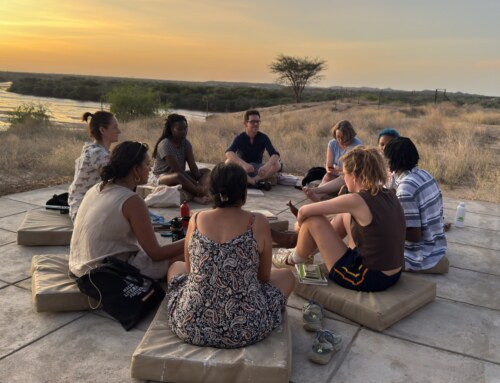Personal journal excerpt:
It is Tuesday evening; I am relaxing in Mpala research center reminiscing a productive day. I am inspired to write a short account of the ant-acacia relationship we learned earlier today:
Picture an ant,
One ferocious and alert,
She tends and serves,
To protect her reserves!
Picture another ant,
One significantly calm,
Still uncanny she deceives,
This cheater still receives!
Hello! Welcome back to the TBI Field School Blog. My name is Stephen Bulyar, I am an Anthropology graduate from the University of Nairobi, Kenya. I have been working as an intern at TBI-Ileret. I am interested in Evolutionary biology and Paleontology.
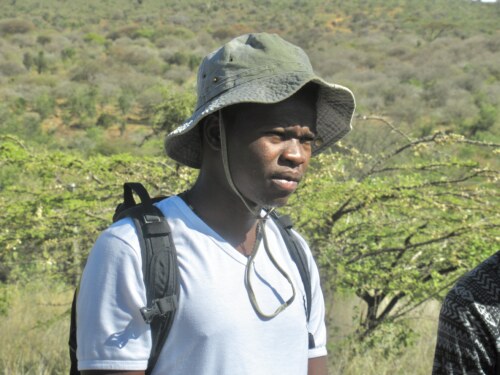
In the field, listening intently as Dr. Martins describes incredible ant – acacia tree interactions.
This week, we are learning Ecology of the Savannah here in Mpala Research Centre which is famously regarded as a living laboratory. Please join me as I take you through this exciting learning experience.
Wednesday began with an early drive around Mpala, we had a chance to experience the biodiversity of this ecosystem and have a closer look into behavioral patterns of some herbivores in their natural habitats. This also provided the students with an opportunity to draw questions from what they observe.

Dr. Martins giving a lecture in the field.
Later that day, Dr. Martins introduced us to the Ecology and epidemiology in Northern Kenya. The savanna is prevalent to various vectors that spread diseases to human populations. The discussion focused on vector population and how the dynamics of environment and anthropogenic factors predisposes human populations to vector borne diseases. We had hands on training inspecting vectors breeding places and collecting larvae and pupae. The collected samples were then taken to the labs at Mpala where we observed and described the specimens under the microscope. We were instructed and assisted by Mpala research and lab assistants.
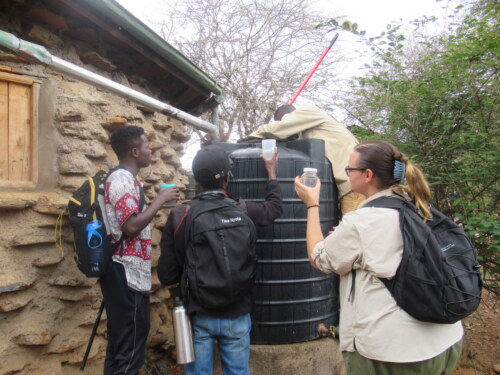
Collecting samples from a rain water tank, stagnant water is a breeding ground for various vectors.
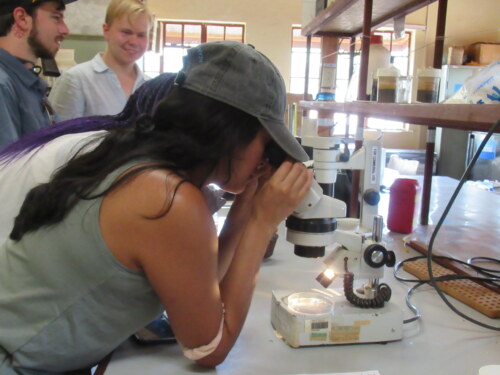
Flor looking at the vectors in the Mpala labs.
Our evening drive brought us to an Aardwolf burrow with two inquisitive and adorable cubs, an extremely rare siting. How cool!
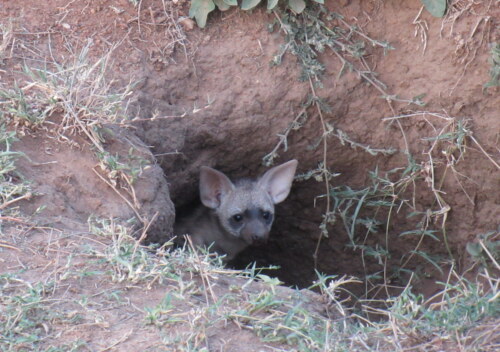
An ardwolf cub!! Very rare to see!
Observing and drawing inferences are key aspects for field scientists. On Thursday, the students practiced these skills by observing, identifying and describing the birds sighted in Mpala. With instructions from Brenda, a resident Ornithologist, we learnt how to identify birds using physical characteristics such as their coat color and markings, nests, their calls and the meaning of different vocalizations.
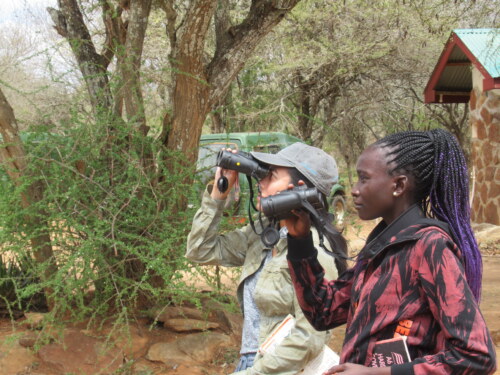
Flor and Patricia bird watching, there is a huge variety of birds at Mpala.
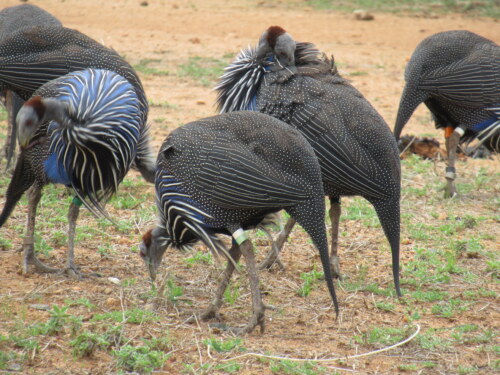
These Vulturine guineafowls (Acryllium vulturinum) are part of a long term study. The rings of the legs help identify individual birds.
In the afternoon, we had a chance to visit a local farmer in Jua Kali area. This experience offered us an understanding of the livelihoods and various subsistence patterns that exists in Laikipia. Our interactions with the farmer, Mr. Jesse. enabled us to understand the coping strategies of the local farmers towards climate change and the dynamics of human-wildlife conflicts in this ecosystem.

A visit to a local farm to learn about people’s livelihoods and how these are impacted by local wildlife and the broader ecosystem in general.
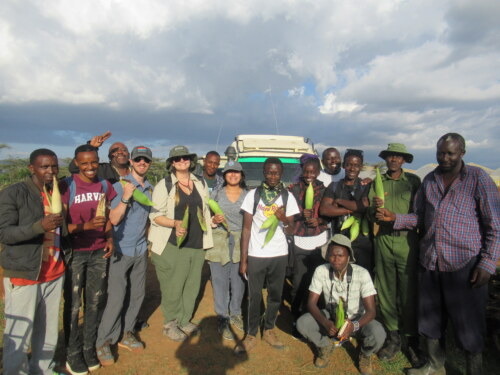
Treats from the farm, fresh corn cobs!
We are introduced to various ongoing research projects in Mpala Research center. We had a guest lecture by Dr. Truman Young. He introduces us to the conservation thought, the history and repercussions of Human, Livestock and Wildlife interactions in the wider Laikipia ecosystem. His experimental research project known as The Kenya long term exclosure experiment, seeks to examine the interactions between cattle and wild ungulates as well as other herbivores in a habitat. The findings of this research would then inform conservation policies and future management regimes.
Later in the afternoon, we had a chance to tour the labs in Mpala. We were able to engage with the Turkana Health and Genomic Project team. Their research focuses on the traditional diet and lifestyle of the Turkana people in Northern Kenya. By analyzing their genotypic make from an evolutionary perspective, their work enables us to understand how different lifestyles influence disease susceptibility and metabolic adaptation to various stresses!
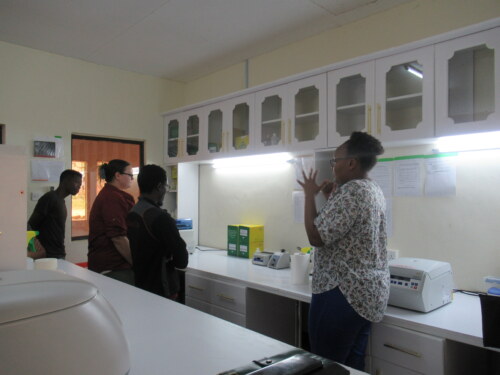
A tour of Mpala’s cutting edge laboratories.
We ended the week by learning about Invasive species. The main focus was on Cenchrus ciliaris, commonly known as buffel grass. This species of grass grows naturally in most parts of Kenya and is drought resistant and has high foliage. Due to its adaptability, it was introduced in tropical rangelands abroad and has become so successful. To better understand the effects of such invasive species we visited the Smithsonian experimental plots. This project excludes native predators and parasites in order to test the “enemy release” hypothesis on buffel grass by effectively making it an invasive species in its native range within small trial plots. Fascinating? Absolutely!
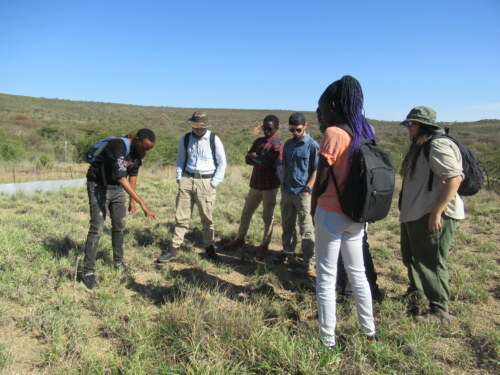
Buffel grass, this is an invasive species, disrupting existing ecosystem dynamics.
Article authored by: Steve Bulyar

